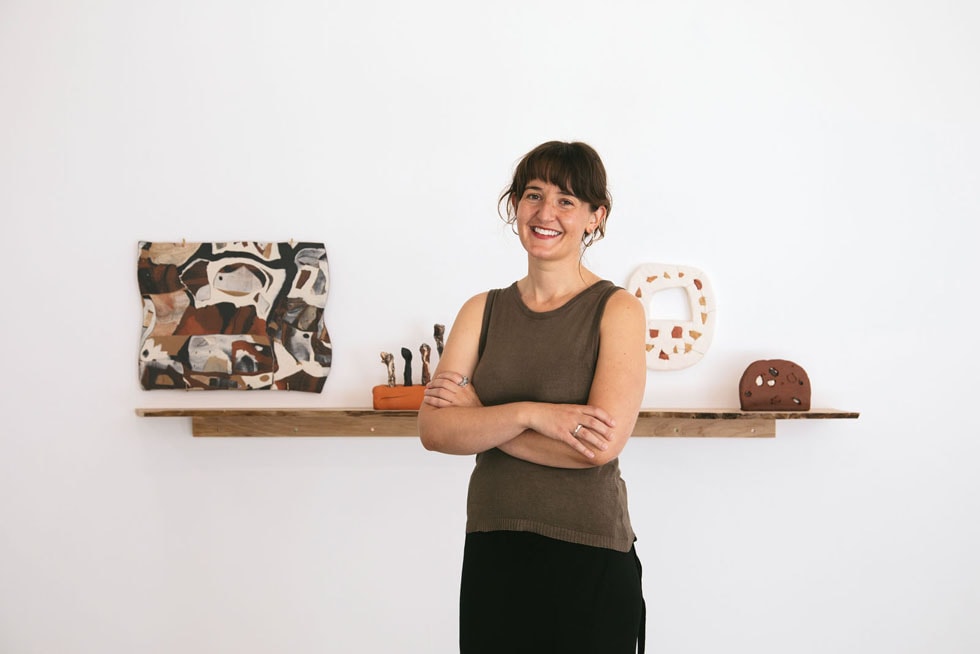Emelia French is breathing a sigh of relief. Having graduated from Elam School of Fine Arts with a Master of Fine Arts in 2017, she’s just completed a PhD in Visual Arts at AUT, and after an intense few years is enjoying being able to slow down a bit and reconnect with other areas of her life that had to be sidelined out of necessity. On the other hand, the momentum of the study was extremely productive for her practice.

So Emelia, tell us about your path to working exclusively with clay… I fully committed to clay as the primary material for my practice in 2021, after using an electric kiln for the first time. For that firing, I made about 30 objects very quickly that mixed three clay bodies together — black, white and terracotta. I remember it felt really easy to do; physically, but also emotionally, the making process felt less laboured than it had with other materials. My approach was playful and experimental, and I enjoyed the strange familiarity of my works. My supervisors and I knew my PhD project — which I’d previously understood to be multi-material — had turned a corner.
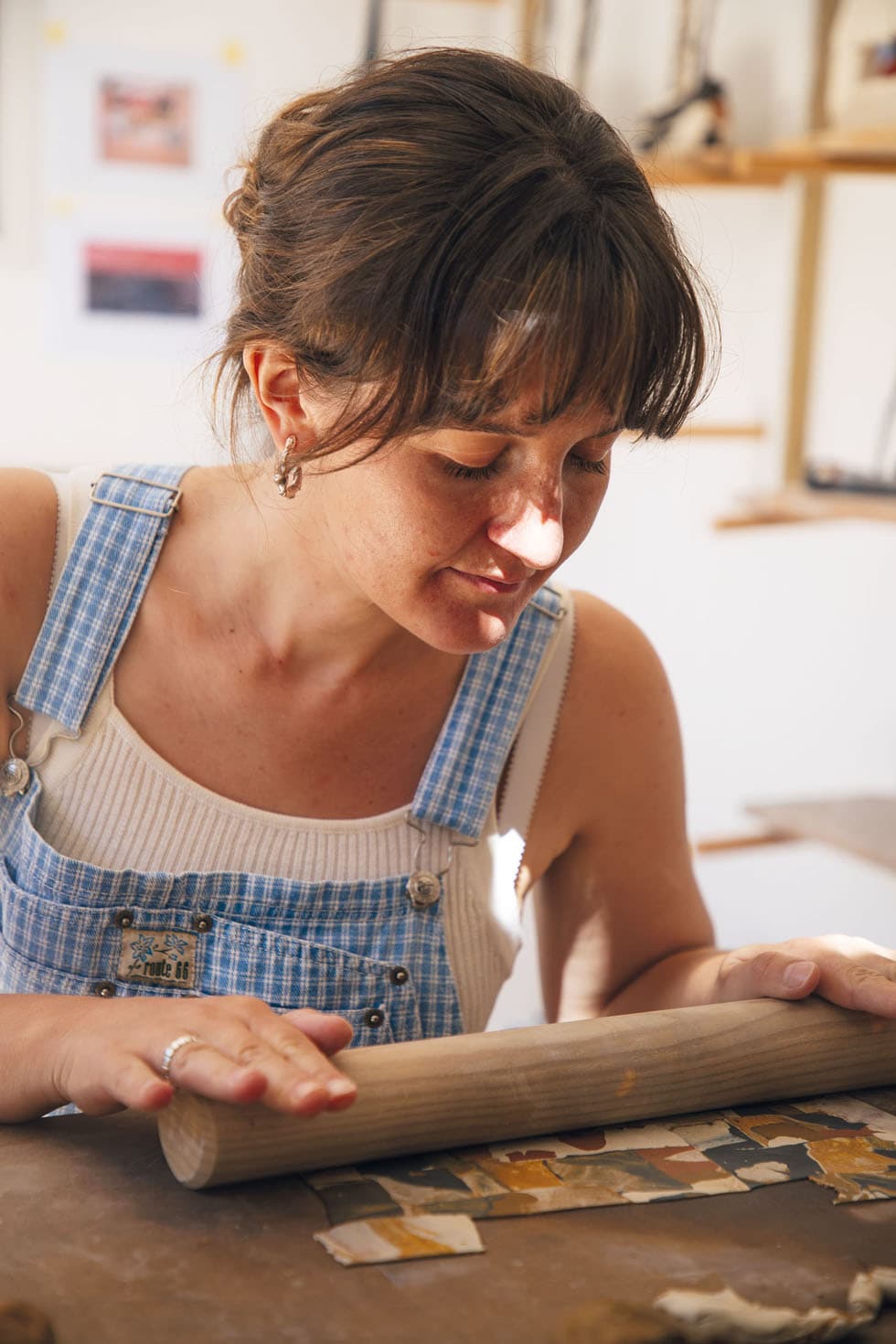
What is it about this medium that excites you? With clay, my practice has become much more process-orientated and open. I’m not concerned with what ceramics ‘should’ look like in the same way I was with painting — instead, I’m motivated by material discoveries.
Clay holds the trace of my touch as marks on its surface. Because it has a bodily language that’s so expressive, it’s much easier for me to work responsively, so every artwork becomes a bit like a visual record of our conversation. Working this way, I never know what the artwork will be in any more detail than ‘tile’ or ‘object’. It’s exciting and dynamic, beginning with nothing in mind and watching an artwork accumulate as I work, unlike anything I’ve seen or imagined.
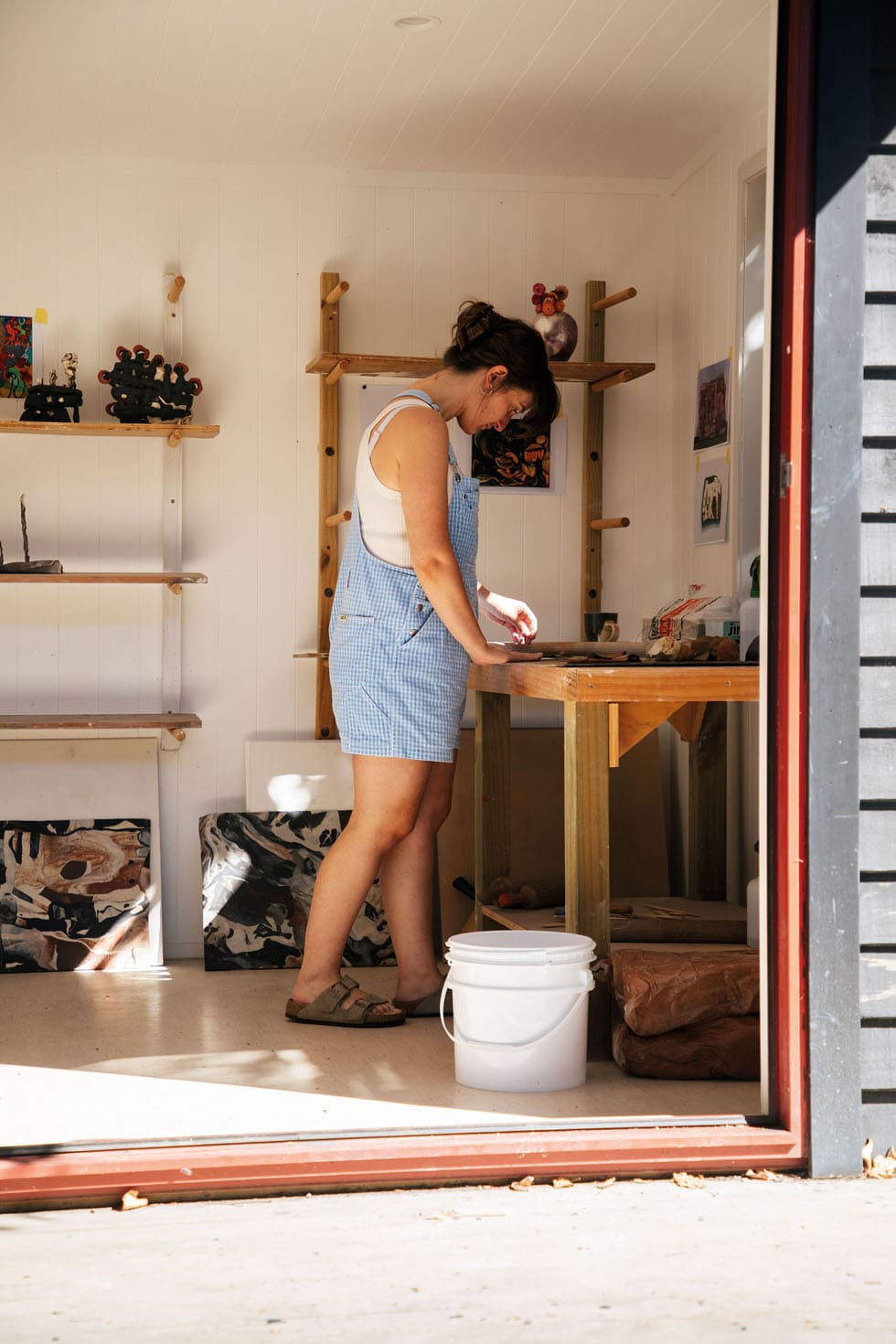
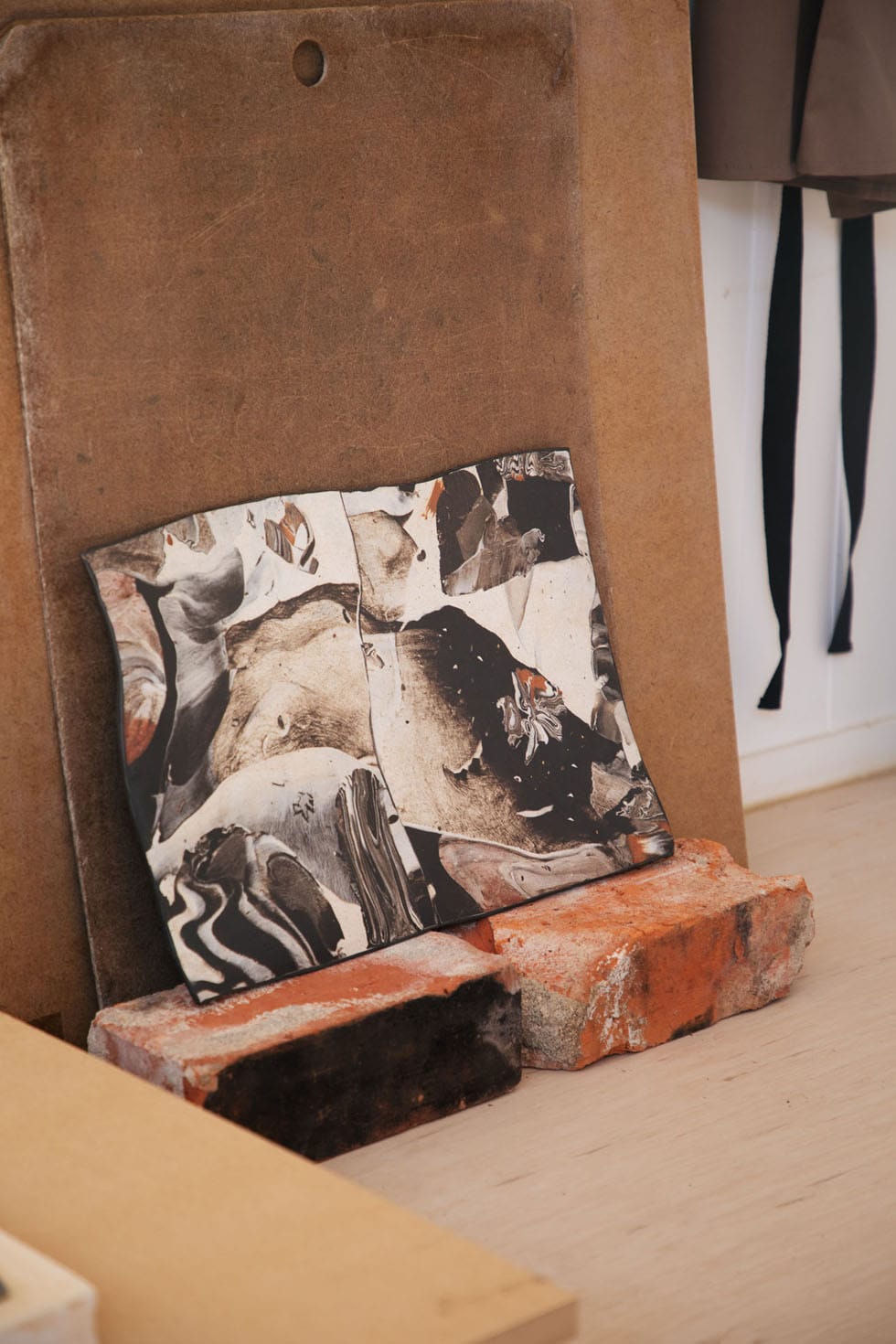
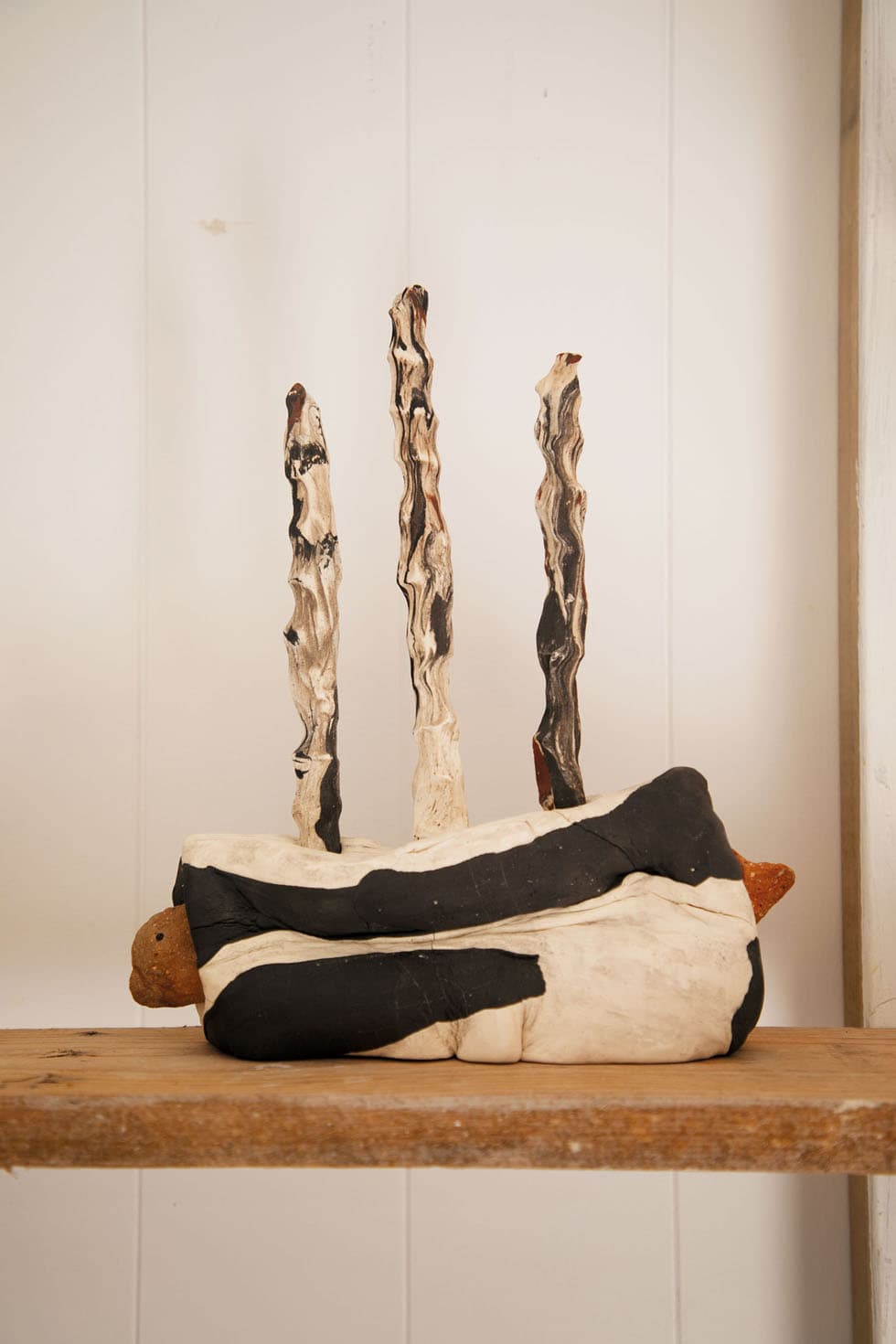
Your work pushes people’s expectations around the ‘formal’ mastery of the material… I don’t really subscribe to the unspoken rules of studio ceramics. I don’t wedge the clay or join it correctly as per the taught ways, and I combine clays of different shrinkage rates and firing temperatures. In theory, all of these factors could be seen as ‘bad’ decisions because they increase the volatility of the material and its susceptibility to cracking. However, often my favourite moments within an object are cracks, so I’d rather provoke them than eliminate them. I tend to describe my works as material propositions. I want to see what the clay does and how it responds to the tensions within an artwork.

What are the most rewarding aspects of your process? The thrill of opening the kiln and discovering a new favourite artwork. Unlike painting, with clay, the processes that happen after my handling of a work — the drying and firing — change the object significantly. Sometimes I might have an inkling of what will be a ‘good’ work, but I can never really know until its colours and marks have developed through firing.
What are the most challenging aspects? I tend to push the clay into unknown territory because I find the threshold between known and unknown the most productive zone for making. I’m not interested in running tests in advance or working within the bounds of what’s likely to deliver a safe outcome, which means I sometimes work through phases of consecutive failures, during which it can be hard to keep my morale up and stay authentic to the adventure of the process.
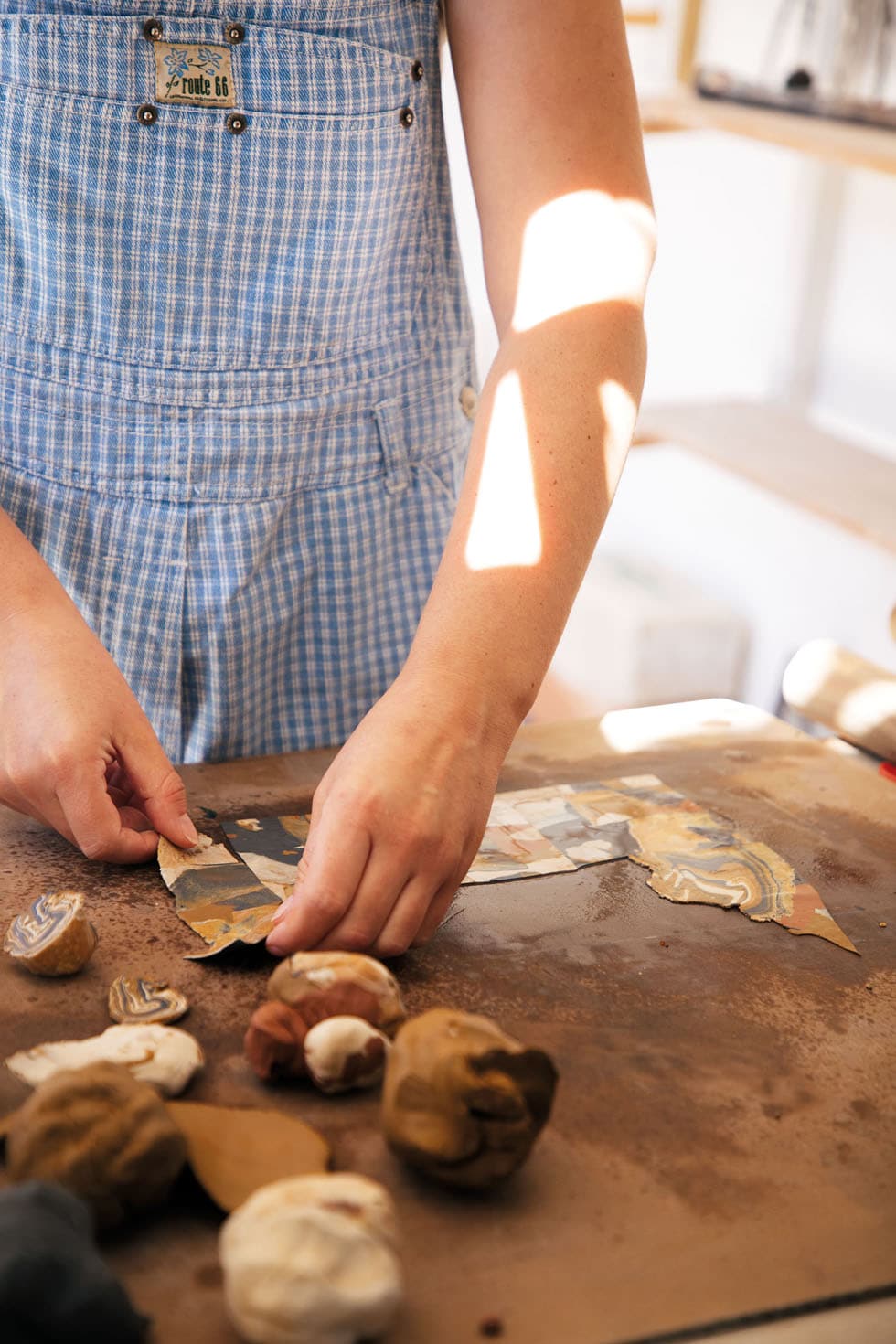
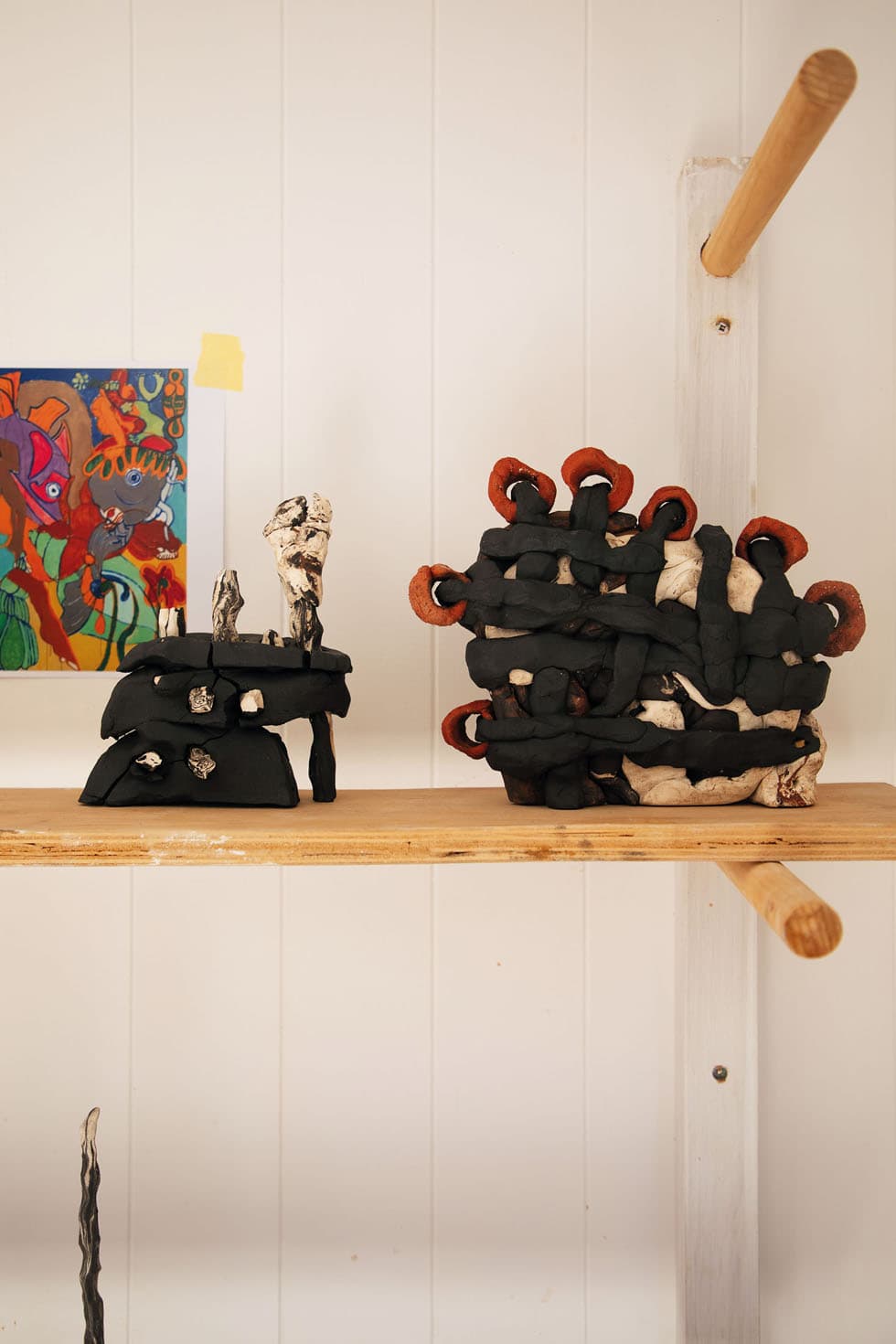
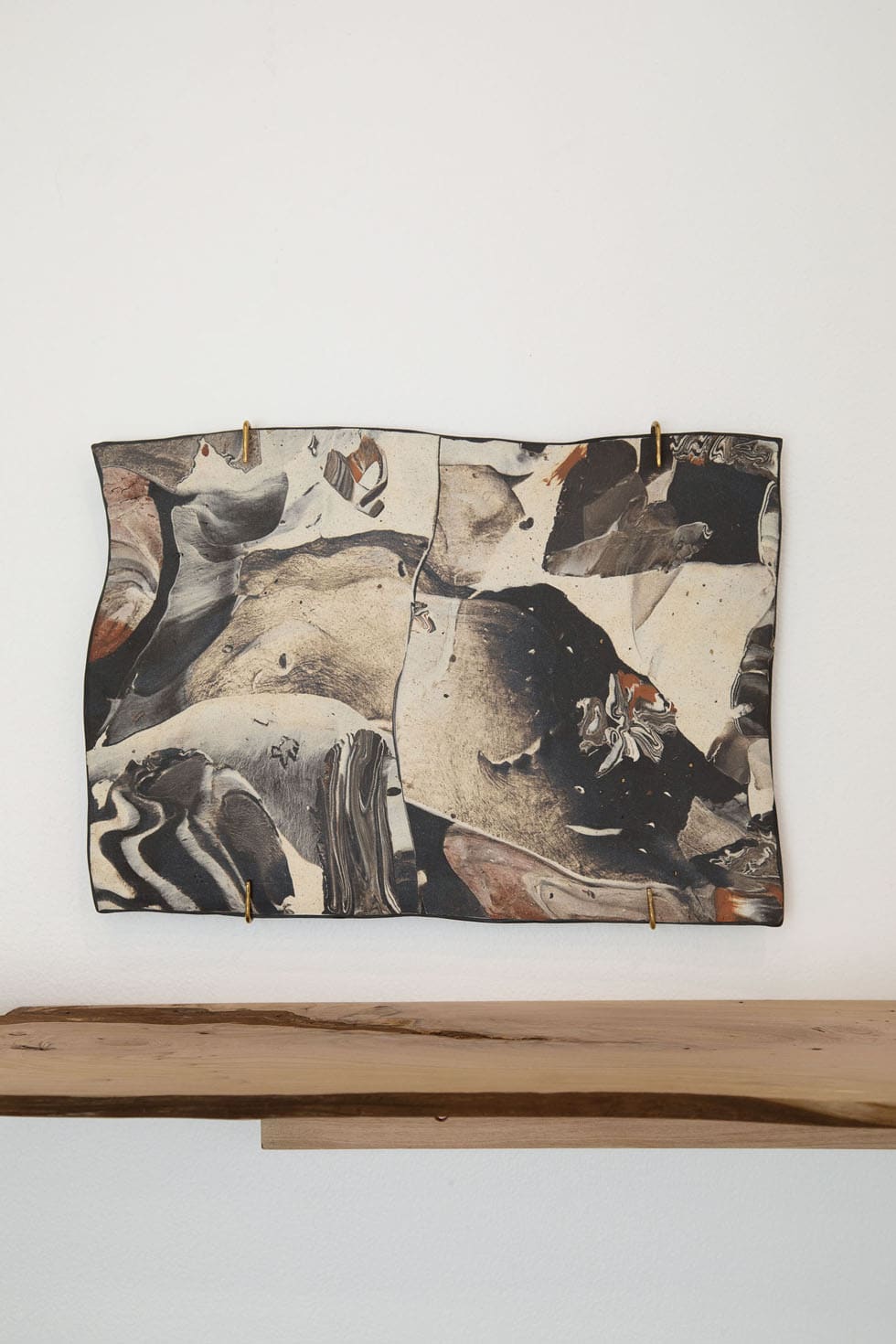
You’re undertaking a residency at Auckland Studio Potters and have a show at Kirikiriroa/Hamilton’s Laree Payne Gallery from June 28 to July 22 — what does this work investigate? I’m interested in artist/material relations and how the artist might work in ways that are more sympathetic to the activity and inclinations of the material. Rather than seeking mastery of ceramics by working the clay into subservience, I want to play up its tendencies to warp, sag and crack. In a way, I’m motivated by the potential to form a friendship with clay and wondering what that could look like in an artwork.
Thematically, I’m concerned with the object/subject relationship and how I might muddy the capacity for us to distinguish between object and painting. I enjoy the middle ground between representation and abstraction. Most of the works I make are quite generous in terms of what they associate with; they look like many things without becoming like them. I enjoy thinking about the impulse in our cognition that makes us see representations in clouds, and am interested in the potential for artworks to do the same.
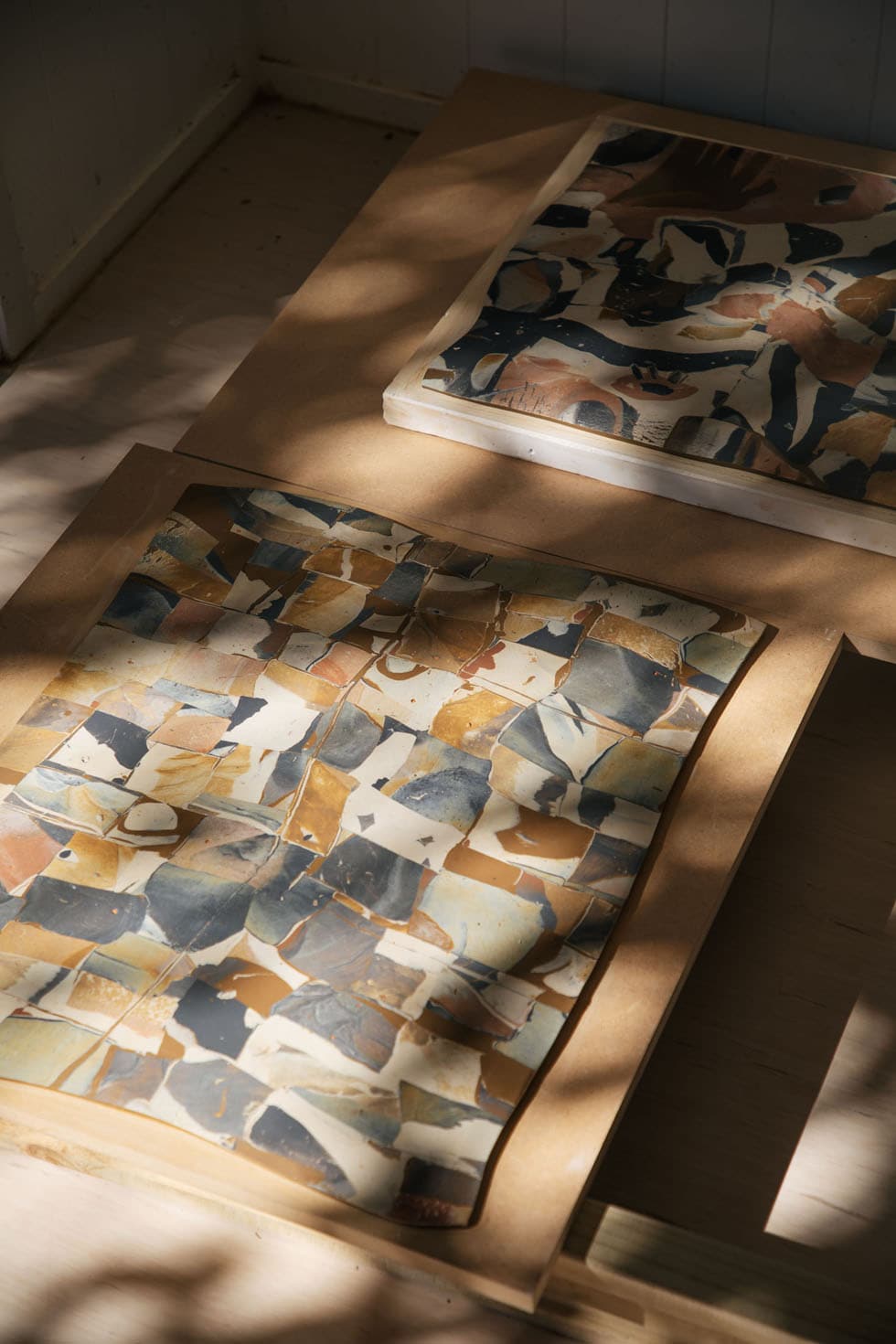
What gets you in the mood to create? I don’t tend to wait until I feel inspired. I’ve found that turning up and getting into the work, irrespective of my mood or feelings about the day, is the most productive approach. Momentum builds and something shifts, and a work begins to emerge through the physical actions of throwing, rolling, cutting, squishing, slamming and slouching the clay.
Before I got pregnant, I always arrived at the studio with a black coffee and tended to wear the same outfit every day: a white singlet or T-shirt, jeans, my favourite pair of tan work boots and my hair out of the way. It’s only now that my jeans are in storage and I’m not drinking coffee that I’ve realised how important these little things are for creating a feeling of industriousness about my day!
@emelia.french
Interview Alice Lines
Photography Emily Parr

